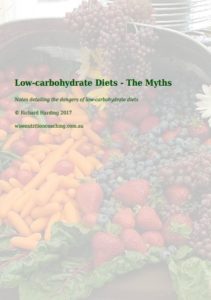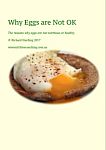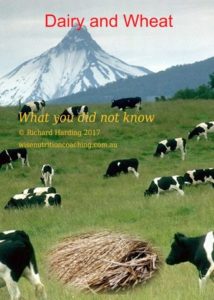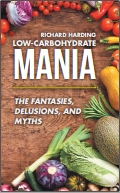The Big Fat Surprise
An article relating to Nina Teicholz book, The Big Fat Surprise, was printed in the Australian on 29th December 2014. Unfortunately, it is largely a repeat of misinformation and misunderstanding of the history of diet and cardiovascular research that is found in popular books and websites.
Whilst the current western diet is appalling and contributes to our poor health, it is absurd to contend that we have been lied to by the government, nutritionists and researchers. The contention that saturated fat from animals is actually quite good for you and cholesterol isn’t really important is simply wrong and not supported by research.
Dr Ancel Keys is one person that the popular diet commentators love to demonise – a common label is “infamous”. Keys did not lie, “cherry-pick” his data or manipulate results to confirm his hypothesis. There is a large body of evidence both before and after Keys’ initial work regarding the role of fats in heart disease.
Unfortunately, the misinformation that is being propagated contributes to the increasing health crisis that these commentators contend that they are preventing.
From the introduction of The Big Fat Surprise, Teicholz claims that:
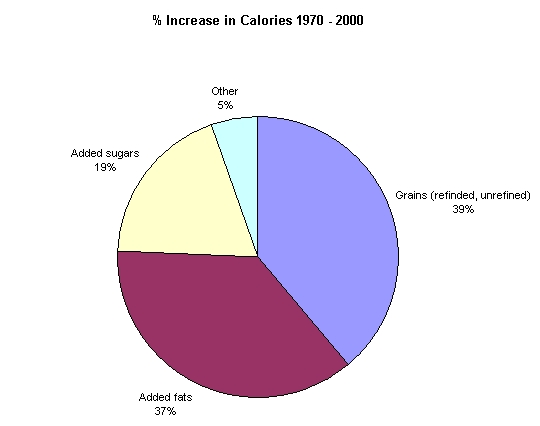 Teicholz neglects to inform us is that for the period 1970 – 2000, the consumption of total added fats (up 40%), dairy products (up 8%), cheese (up 107%), low fat milk (up 79%), all meat products (up 10%), poultry (up 89%) and fish (up 22%) increased. All of these food products, even low fat milk, are high fat foods.
Teicholz neglects to inform us is that for the period 1970 – 2000, the consumption of total added fats (up 40%), dairy products (up 8%), cheese (up 107%), low fat milk (up 79%), all meat products (up 10%), poultry (up 89%) and fish (up 22%) increased. All of these food products, even low fat milk, are high fat foods.
The total calories consumed also rose significantly by 24%. (Data from United States, Department of Agriculture • Agriculture Fact Book 2001-2002)
The same publication shows the increase in different food groups from the 1950s.
Note that fats have 9 Cal/g whilst carbohydrates and protein have 4 Cal/g.
| Item | 1950-1959 | 2000 | % change |
|---|---|---|---|
| Total Meats | 138.2 | 195.2 | 41 |
| Poultry | 20.5 | 66.5 | 224 |
| Fish | 10.9 | 15.2 | 39 |
| Added Fats and Oils | 44.6 | 74.5 | 67 |
| Total Calorific Sweeteners | 109.6 | 152.4 | 39 |
USA Per Capita Annual Average (lbs)
The claim that the American people have been eating a “low-fat, near vegetarian diet for the last half-century” is absurd. Beef consumption may have reduced 20% but all meats have risen 10% and poultry 89%.
33% of calories from fat is NOT a low-fat diet.
It is reasonable to suggest that cholesterol and heart disease research originated with Nikolaj Anitschkow. This is how Nina Teicholz reports the situation in the early part of the 20th century.
Teicholz claims that:
Keys was certainly not the first person to link diet and fats to heart disease.
Cornelius de Langen worked as a doctor in the Dutch East Indies from 1916-1922, (yes 1916). He linked diet, serum cholesterol and heart disease by comparing diets of native Javanese and Europeans. He also noted low cholesterol content of bile and the rarity of gallstone in Javanese. 2
Lester Morrison in 1946 also linked diet, cholesterol and heart disease before Keys.
Dr John Gofman, a nuclear physicist, was a leading pioneer researcher in the field of lipoproteins who was familiar with Anitschkow’s work. His work showed that both cholesterol and low-density lipoproteins were both indicators of coronary heart disease risk. This work and other evidence convinced Gofman that blood cholesterol, and the dietary determinants of blood cholesterol, was centrally important in atherosclerosis. His wife, Dr. Helen F. Gofman co-authored a low-fat, low-cholesterol diet book 3 that was published in 1951 – prior to Keys’s paper. John Gofman wrote the preface for the book.
Teicholz cites Norman Jolliffe’s 1957 study, The Anti-Coronary Club, as further evidence of the failure of a low-fat diet to arrest heart disease. 4 5 6
According to Teciholz,
However, according to the paper The Anti-Coronary Club – A Dietary Approach To The Prevention of Coronary Heart Disease – A Seven-Year Report, states that the incidence of new cases in the Active Group was 339 compared with 980 per 100,000 on the Control Group. The same report states that there was 8 new events (note that it is 8 new events, not deaths) for the Active Group and 12 new events for the Control Group. Despite Teicholz’s claims, the number of deaths was not reported.
The Active Group had a much higher level of risk factors than the control group.
Another criticism from Teicholz states,
Teicholz does not state which critics. Keys does give reasons why he choose the countries. Note that Keys and his colleagues were not studying countries. Paul Dudley White, the esteemed cardiologist, was involved in the selection of the regions. They selected 16 different, contrasting regions in 7 countries. There are wide regional variations in the diets of France with 8 distinct dietary regions. Similarly, there are wide variations in diet in rural and coastal areas, with Finland being particularly notable.
According to a paper in the Dialogues of Medicine – Vol 13 No 3 2008 7, the French paradox is indeed a myth.
Teicholz states,
There were 3 rounds of surveys in Crete in 1960, 1965 and 1970 which were many years (decades) after the end of World War II. Keys did not work isolation. He worked with teams that included native speaking researchers.
Jacob Yerushalmy and Herman Hilleboe strongly criticised Keys for “cherry-picking” data in his 1953 paper’. They examined the data from all of the 22 countries in the WHO Epidemiological and Vital Statistics 1951-1953 publication. The results were published in their paper Fat in the diet and mortality from heart disease. Even when taking all of the 22 countries into account, their conclusion revealed that:
Their paper also revealed positive correlations between heart disease and calories consumed, fat consumption, animal fat consumption, animal protein consumption which is ignored by Teicholz. The paper also revealed negative correlations with heart disease and carbohydrate consumption, vegetable protein consumption, vegetable fat consumption.
The focus on any one component of a diet such as fats, saturated fats or sugars is misleading.
Teicholz and the Inuit
Teicholz uses both the Inuit and Masai as examples of healthy populations that thrive on a high fat diet.
Inuit are far from being a healthy population They suffered from osteoporosis, a very high rate of stroke, kidney disease, parasites including toxoplasma, atherosclerosis and glucose intolerance. Parasitic infections lower blood cholesterol.
In 1906, Vilhjalmur Stefansson lived with the Inuit in northern Canada, living and eating with his hosts. A Time magazine article from March 31 1930, Medicine: All-Meat Controversy describes Stefansson and a colleague Karsten Anderson consuming a flesh only diet for a year. This experiment was funded partly by Institute of American Meat Packers.
They suffered constipation, their muscles were “soft and flabby” and suffered from glucose intolerance and acetonuria. Their urine acidity increased. Anderson suffered from glycosuria. However, the researchers, sponsored by the meat industry, reported “no ill-effects”. 8
Read a more extensive review of the impact of the diet of the Inuit people
Teicholz and the Masai
Similarly, Teicholz cites the Masai as a healthy population that had a high meat diet. She quotes the work of George Mann, a doctor and medical researcher from Harvard and Vanderbilt Universities. According to Teicholz, Mann found that “he could identify almost no heart disease at all“. 9 However, according to George Mann’s paper, Atherosclerosis In The Masai, 10
Structure of Fatty Acids
In chapter 2, there is an incorrect diagram of a fatty acid with a caption A Fatty Acid Is a Chain of Carbon Atoms Surrounded by Hydrogen Atoms. Two of the carbon atoms only have 3 hydrogen atoms (high school chemistry tells as that there should be 4 hydrogen atoms). It is also missing the carboxyl group at one end that contains two oxygen atoms.

Ancel Keys and the Mediterranean Diet
Ancel Keys coined the name and introduced the concept of Mediterranean diet In 1975, Ancel Keys and his wife Margaret published the book How to Eat Well and Stay Well the Mediterranean Way (New York, NY: Doubleday & Co; 1975) based on the results of his studies. This diet was based on the diets of Greece, southern Italy and the Mediterranean coasts of France and Spain in the 1960s.
According to Keys, 11.
A Mediterranean Diet or a Whole Food Plant-Based Diet as practiced by societies that are longest lived and healthiest is, by its nature, low in fats, saturated fats, animal protein and high in carbohydrate, antioxidants, dietary fibre, vitamins, minerals and the many other micro-nutrients that are essential for our well being.
Related articles
Ancel Keys and the High-Fat Diet “Experts”
Ancel Keys did not manipulate his data
Robert Lustig and the Men Who Made Us Fat
TIME Magazine Article – Eat Butter
TIME Magazine Article – Eat Butter – Part 2
Heart of the Matter – ABC Catalyst
The Pioppi Diet
Last updated on Saturday 2 December 2023 at 18:52 by administrators
Footnotes
- Steinberg, D. (2007) The Cholesterol Wars: The Skeptics vs. the Preponderance of Evidence. San Diego, CA: Academic Press.
- Truswell, A. Stewart (2010-06-22). Cholesterol and Beyond: The Research on Diet and Coronary Heart Disease 1900-2000 Springer Netherlands
- Dobbin, E. V. et al. (1951) The Low-Fat, Low-Cholesterol Diet. Doubleday, Garden City, NY.
- Jolliffe, N. et al. (1959) The Anti-Coronary Club; including a discussion of the effects of a prudent diet on the serum cholesterol level of middle-aged men. Journal of Clinical Nutrition. 7 (1), 451–462.
- Jolliffe, N. (1959) Fats, Cholesterol, and Coronary Heart Disease. Circulation. 20 (1), 109–127.
- Jolliffe, B. N. et al. (1961) Dietary Control of Serum Cholesterol in Clinical Practice. Circulation. XXIV (December)
- Tunstall-Pedoe, H. (2008) The French Paradox : Fact or Fiction? Dialogues in Cardiovascular Medicine. 13 (3)
- McClellan, W. S. & Bois, F. D. (1929) Prolonged Meat Diets with a Study Function and Ketosis. Clinical Calorimetry.
- Teicholz, N. (2015) The Big Fat Surprise. Simon & Schuster.
- Mann, G. V. et al. (1972) Atherosclerosis in the Masai. American Journal of Epidemiology. 95 (1), 26–37.
- Keys, A. (1995) Mediterranean diet and public health : personal reflections. American Journal of Clinical Nutrition. 613–5

